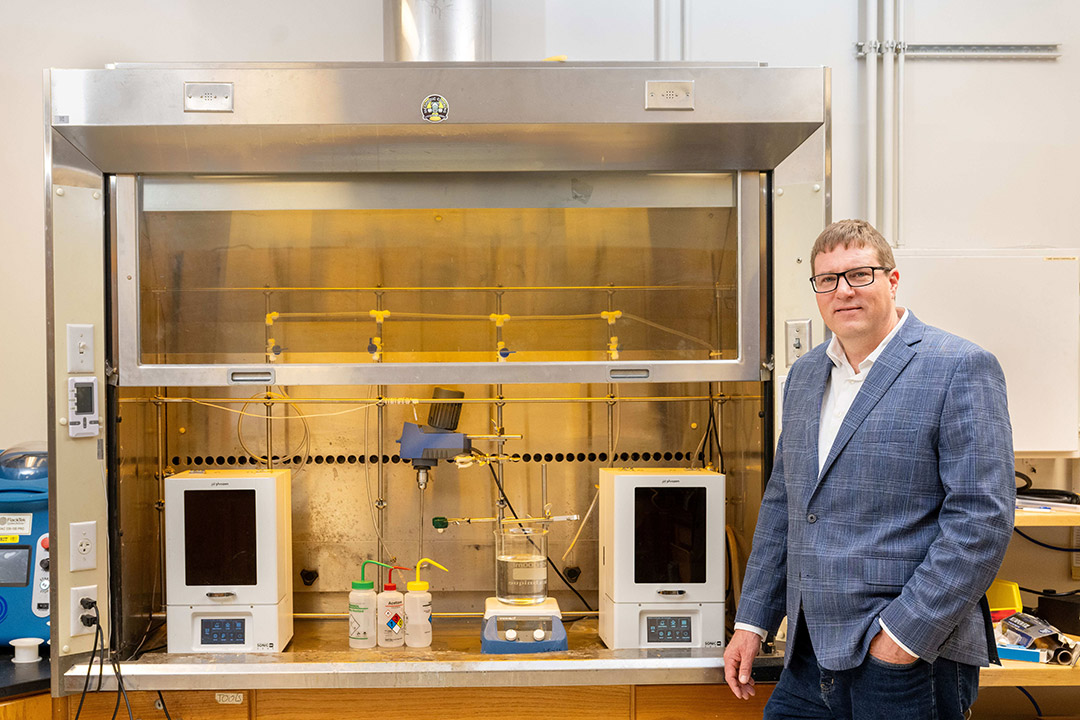Building reflects growth of university research and interdisciplinary work across colleges

Boris Sapozhnikov/RIT
Against the backdrop of campus and the city of Rochester, the research building (foreground) will become one of RIT’s newest facilities with expected occupancy in spring ’25.
As the final phase of the new research building is completed, faculty-researchers from three of RIT’s colleges are preparing to be its first residents. They expect to move into the 39,000-square-foot building in the spring semester.
For the new occupants from RIT’s College of Science, Golisano College of Computing and Information Sciences (GCCIS), and Kate Gleason College of Engineering, the lab space is an expansion of facilities within their respective colleges and an opportunity for cross-college work.
“We’re seeing an increasing trend of collaboration across disciplines, and this space amplifies that spirit,” said André Hudson, dean of the College of Science. “By bringing together faculty, staff, and scholars from varied backgrounds under one roof, we’re not just creating opportunities for collaboration, we’re fostering a culture where interdisciplinary innovation thrives.”
RIT aligns with trends in higher education, where research intensive universities are seeing more mixed-use facilities that bring together multiple disciplines. A new building also paves the way for increased support to current programs such as GCCIS’ extensive work in cybersecurity and information sciences and to new programs, such as the Ph. D. in cognitive science, which began this academic year. The program brings together areas such as psychology, computer science, linguistics, and neuroscience.
Exterior work for the new building is nearly complete and the interior design is underway. Structural work started in early 2022 on the two-story building that combines a more open look and flexible spaces. There will be 18 labs—eight on the first floor and 10 on the second. Other spaces will be assigned as new faculty-researchers are recruited. All have the capacity for both wet and dry labs—those needing special fume hoods, water or electrical utilities, and for bio-level safety measures, as well as those that will be equipment and computer heavy.
Engineering faculty members confirmed for the site are Steve Weinstein, professor of chemical engineering; Risa Robinson, professor of mechanical engineering; and Edward Hensel, a professor of mechanical engineering and associate dean of Research and Graduate Studies. Weinstein is a theoretical and experimental expert who studies the creation of thin films via roll-to-roll coating methods and the scale-up from bench to industrial-sized processes. Robinson and Hensel’s work in e-cigarette research that has become a foundational resource about health effects, emissions and user behaviors for all inhaled tobacco products. Further work in the new lab space will support their five-year NIH project to study how users of different nicotine e-liquids consume higher levels of harmful constituents. Data will aid in the development of novel cessation treatments.













